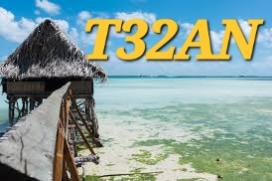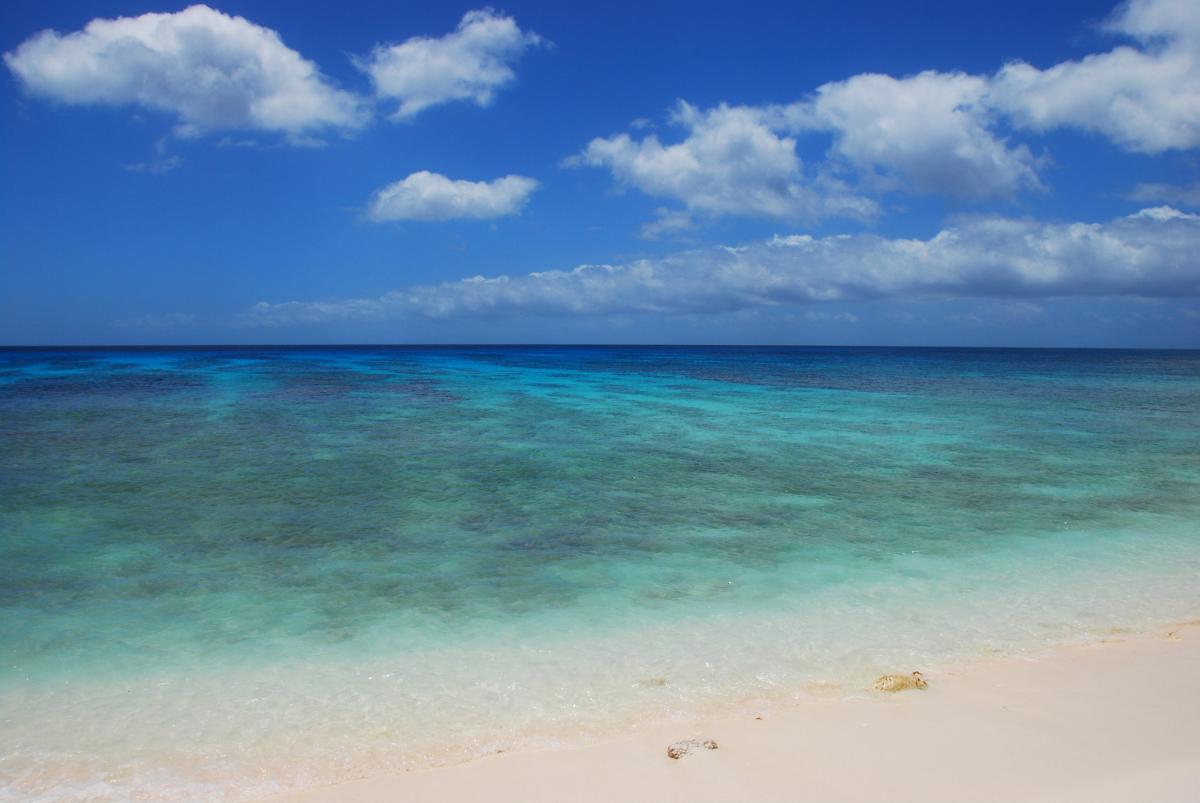Bert, CX3AN will be active as T32AN from Kiritimati Island, IOTA OC - 024, Kiribati, 4 - 11 October 2023.
He will operate on 40 - 6m, CW, SSB.
Recent DX Spots T32AN
T32AN Log search QSL via EB7DX.
Ads for direct QSL:
DAVID LIAÑEZ FERNANDEZ, P.O.BOX 163, 21080, HUELVA, Spain.
DXCC Country - Eastern Kiribati, T32.
T32AN Kiritimati Island News 5 October 2023
Bert, CX3AN start his activity as T32AN from Kiritimati Island.
Kiritimati is an island of serenity
Kiritimati Island, also called Christmas Island, was discovered by the famous navigator J. Cook exactly on Christmas Eve 1777. Having landed on land, the ship's crew spent a few days on it, having arranged a kind of Christmas holiday. At that time the island was uninhabited because of its remoteness from the mainland and the inhabited islands of Oceania. If you look at a world map, you can see that Kiritimati is located almost in the centre of the Pacific Ocean. It and several other islands of the Line group are a part of the island state of Kiribati, in fact, being its remote outskirts. This piece of land has one surprising feature caused by its geographical location: the people of Kiritimati are the first in the world to celebrate New Year's Eve.
 Kiritimati Island, Kiribati. Author - Calvin Smith.
Kiritimati Island, Kiribati. Author - Calvin Smith.
The largest atoll in the world
Volcanic processes in this part of the Pacific Ocean ended about 37 million years ago, raising several peaks above the sea floor. But the relentless work of the sea waves has almost completely destroyed the volcanic peaks. But the quiet and imperceptible life of corals led to the formation of a unique atoll in size and structure - the island of Kiritimati, which has an area of about 130 square kilometres. The atoll consists of one large and several hundred small lagoons scattered around the island.
Kiritimati is an island of sand and sky
The entire surface of the island is covered with white coral sand, on which palm trees and tropical shrubs grow, forming in some places quite dense thickets. There is practically no tall vegetation, mostly the height of bushes does not exceed two metres, and the slender trunks of palm trees are not an obstacle to the view. Therefore, the scenery of Kiritimati is rather monotonous: white sand, bushes, palm trees and high, serene blue sky with clouds flying along it.
There are luxurious and completely deserted beaches washed by perfectly clear waves. Going barefoot into the water is not recommended, especially for visitors, as sharp coral fragments can cut your soles. But special slippers worn by scuba divers solve this problem. The temperature is stable and stays at 24-27 degrees centigrade. Kiritimati could become one of the famous resorts, but it is too far from the mainland.

Birds and cats of the atoll
Kiritimati is home to some 6 million birds, some of which are rare and protected by law. For this reason, the island has five protected areas, which can be visited only with a special permit, so as not to disturb the feathered inhabitants. The local fauna is not diverse and is represented only by the sand rat and the green sea turtle.
Birds of Kiritimati are characterised by an amazing diversity of species - ornithologists have counted 37 different species of birds, of which 20 species live on the island permanently, and the rest come during seasonal migrations. Thanks to the absence of natural enemies, the birds felt completely safe here, but human intervention put an end to their paradisiacal life. Some of the settlers brought cats with them and these animals multiplied and posed a serious threat to the bird population.
Fortunately, Kirimati has lagoons completely inaccessible to cats where the birds can nest in safety. But the cute pets are legally recognised as a threat to the island's ecology, and islanders can now only get a cat if it is sterilised and will not breed.
 Kiritimati Island, Kiribati. Author - Mingxi Yang.
Kiritimati Island, Kiribati. Author - Mingxi Yang.
Guano, pearls and a nuclear bomb
Until the mid-nineteenth century, Kiritimati was of little or no interest to European colonisers. Remote from sea routes, the virtually barren piece of land could not be utilised for profit. Everything changed when in 1857 J. Stetson discovered deposits of guano - centuries-old layers of bird droppings, ideal raw material for the production of phosphate fertilisers. The following year, the exploitation of the deposits began, with the Americans, British and Australians competing with each other for the right to own the island. Since 1888 the atoll has belonged to Great Britain as one of its overseas possessions. In addition to the development of guano, coconut palm trees were grown here and pearls were fished here - some reports say they were harvested up to 50 tonnes a year.
During the Second World War, Kiritimati became a battlefield. An Anglo-American military base was organised here and an airfield was built. After some time, the Japanese landed on the island and seized it - it was practically the only territory taken by Japan from the coalition countries. However, soon the descendants of the samurai had to leave Kiritimati, and over the atoll again raised the British flag.
At the end of the war, in 1957, a nuclear bomb was tested on one of the deserted islets near Kiritimati. The consequences of this explosion are still negatively affecting the ecology of the island - some species of birds and endemic plants have almost disappeared.
Today the population of the atoll is about two thousand people, who are engaged in coconut palm cultivation and copra production, as well as fishing for supply to industrialised regions. The standard of living on the island is extremely low. Virtually all manufactured goods, including building materials, are imported by sea, so many of its inhabitants live in palm-leaf-roofed huts built from palm trunks. A significant share of the islanders' income could be tourism, but so far the flow of holidaymakers is quite small, and most of them are fans of exotic fishing. For the locals, time still flows slowly and serenely as the clouds float over the vast Pacific Ocean.

